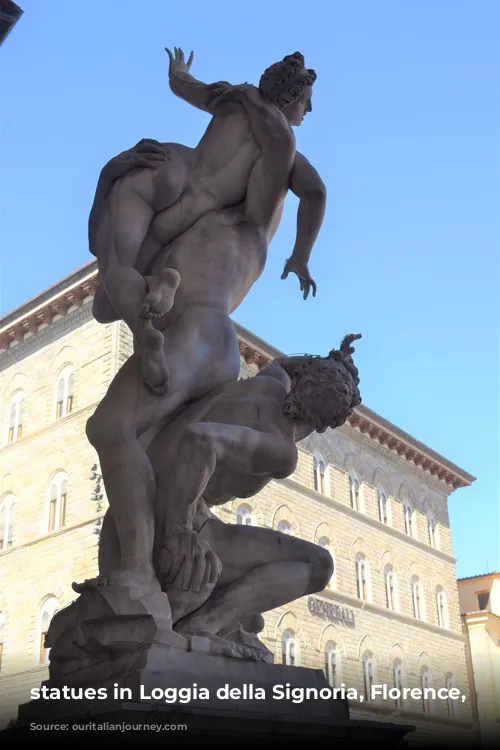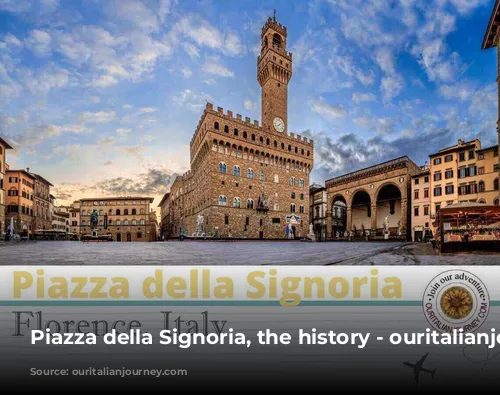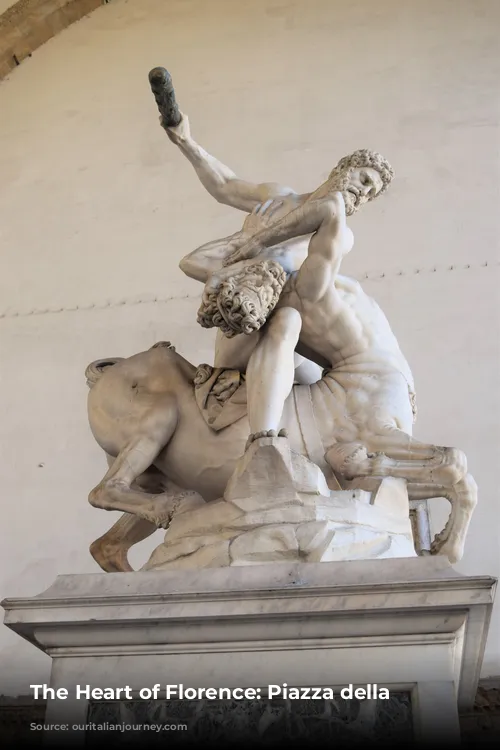Piazza della Signoria is a captivating square in the heart of Florence, Italy. Its name, which translates to “Square of the Lordship”, comes from the Palazzo Vecchio that dominates its landscape. This magnificent building, formerly known as the Palazzo della Signoria, is a feast for the eyes, boasting stunning architecture and intricate details. Take a moment to admire the Coat of Arms displayed above the first set of windows – they’re truly intriguing.
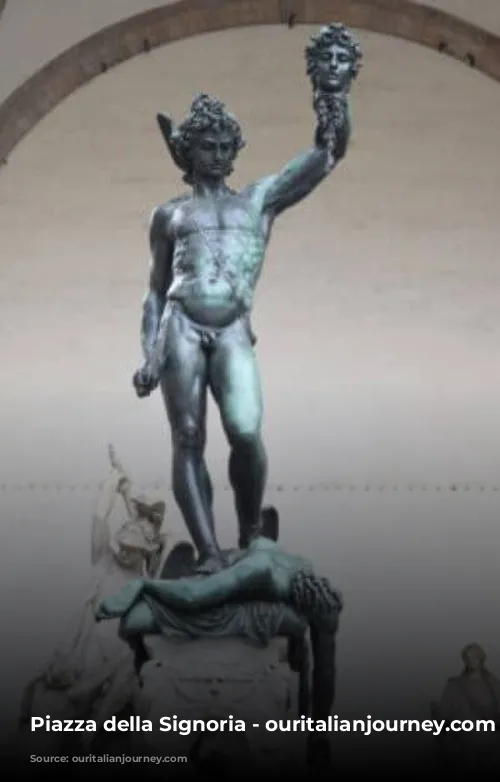
Masterpieces and Memories
The Piazza is a treasure trove of art and history. Michelangelo’s David, a colossal bronze statue, stands guard at the Piazza’s entrance. While the original now resides at the Accademia di Belle Arti, the replica here is a worthy substitute, drawing visitors in with its awe-inspiring presence. On the other side, Hercules and Cacus, sculpted by Bandinelli in 1533, stand tall, their powerful figures adding another dimension to the square’s dynamic energy.
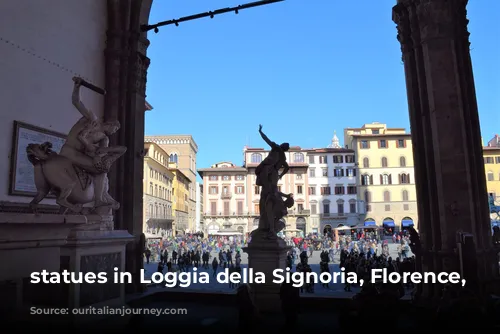
A Building with a Past and Present
The Palazzo Vecchio, a 14th-century masterpiece, once served as Florence’s town hall and continues to be the seat of the local government today. While it’s a working building bustling with offices, including the mayor’s, its historical significance and architectural grandeur make it a must-see for any visitor.
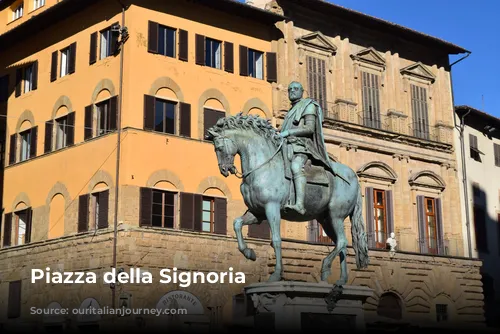
The Beauty of Open-Air Art
The Loggia della Signoria, also known as “Dei Lanzi”, is a breathtaking open-air sculpture gallery showcasing antique and Renaissance art. Amongst these captivating works, Perseus with the Head of Medusa, sculpted by Benvenuto Cellini, holds a special place in my heart. Its powerful presence and intricate details evoke a sense of wonder, reminding me of the 1981 movie “Clash of the Titans” – a classic tale of heroism and mythology.
The Loggia also houses a collection of captivating sculptures, each telling a story:
- Pirro Rapes Polyxena (1860-1865): This dramatic sculpture by Pio Fedi depicts a pivotal moment from Greek mythology.
- Roman Lady called Sabine (1789): This enigmatic figure stands as a testament to the elegance and grace of ancient Roman art.
- Barbarian Prisoner called Thusnelda (1789): This powerful sculpture, originally from the Villa Medici in Rome, evokes the strength and resilience of those who defied Roman power.
- Menelaus Supporting the Body of Patroclus (1570): A copy of a Greek original, this sculpture captures the grief and despair of a great warrior mourning the loss of a comrade.
- Hercules Fighting the Centaur Nessus (1594-1599): Giambologna’s dynamic sculpture depicts the epic battle between Hercules and the monstrous centaur Nessus.
- Latin Inscription (1750): This inscription commemorates the change of the Florentine calendar to align with the Roman calendar.
- Inscription (1893): A tribute in marble to the Florentines who fought bravely for their independence.
- Rape of the Sabine Women (1581-1583): Giambologna’s masterpiece, combining marble and bronze, portrays the dramatic scene of the Sabine women being taken captive by the Roman warriors.
- Lion (1789): This imposing lion, originally from the Villa Medici in Rome, stands guard, its presence adding an element of grandeur to the Loggia.
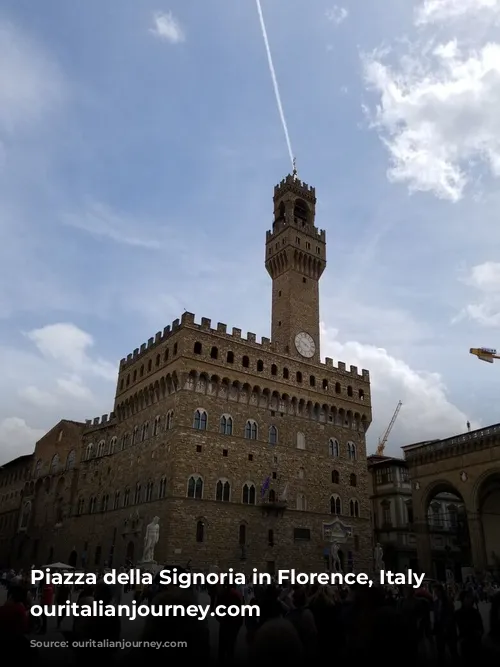
Beyond the Masterpieces
The Piazza della Signoria is not just about art. The Fountain of Neptune, fondly nicknamed “Biancone”, stands tall in the center, its intricate carvings and majestic sculptures a testament to the city’s artistic spirit. The equestrian statue of Cosimo I de Medici, sculpted by Gianbologna, further adds to the Piazza’s grandeur.
A Legacy of Conflict
The Piazza also bears witness to the turbulent history of Florence. A marker dedicated to Girolamo Savonarola, a Dominican friar who held sway over Florence in the late 15th century, stands as a reminder of his controversial legacy.
Savonarola, known for his fiery sermons and belief in moral purity, led the “Bonfire of the Vanities”, destroying art and wealth in an attempt to cleanse Florence of its perceived evils. This controversial act led to the destruction of precious art and historical artifacts, marking a dark chapter in Florence’s history.
His political ambitions ultimately led to his downfall, as he challenged the authority of Pope Alexander VI. An angry mob seized Savonarola and brought him to the Piazza della Signoria, where he met his tragic end.
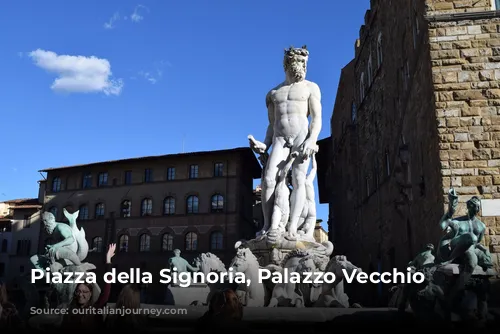
The Piazza Today
Today, Piazza della Signoria remains a vibrant hub of activity, a place where locals and tourists alike gather to soak up the city’s unique energy. Whether you’re enjoying a panini on a bench, people-watching, or admiring the city’s architectural gems, Piazza della Signoria offers a captivating glimpse into Florence’s rich history and artistic spirit.
